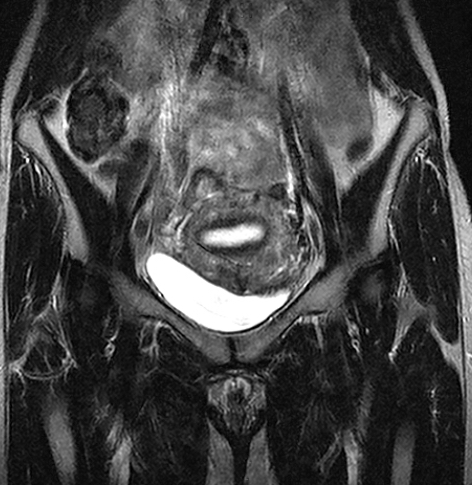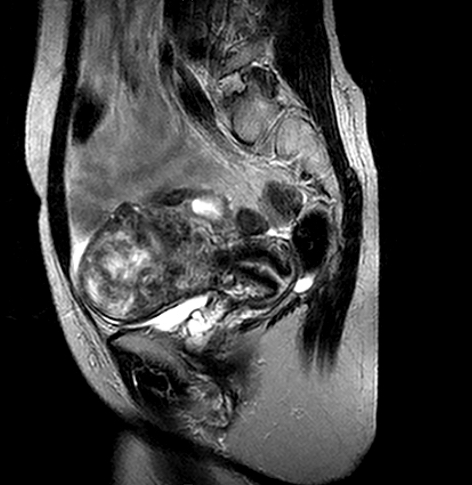Calm, dignified
experience
Medserena Pelvis Gynae MRI scan
From £735.00
MRI scan of the pelvic region; non-invasive procedure to help diagnose medical conditions relating to the pelvic region including female reproductive organs, price includes:
- Open and Upright MRI scan
- 50 minutes appointment
- Radiologist findings report
- Images provided via secure link to your email address at the end of the scan and available to NHS trusts via IEP on request
- Complimentary refreshments
Please wear metal free clothing and if possible, avoid wearing any jewellery. Alternatively, Medserena can provide you with a gown to change into for your scan. Scroll down for more pelvic region MRI scan information.
Superior healthcare service with every Private MRI scan
Little or no
waiting time
Largest MRI scan centres
Premium
refreshments
Watch TV while
scanning
Medical report included
About Pelvis Gynae MRI scans
A Pelvis Gynae MRI scan gives an in-depth view of all the structures and organs in the pelvic region between the belly button and the groin. Since MRI has high contrast resolution, it provides clear images using multiplanar imaging that allows three anatomic planes to be visualised.
It can be used to investigate several symptoms and disorders including chronic pelvic pain, tumours and cysts, and diseases that affect the female reproductive organs, including endometriosis. It is a valuable adjunct to ultrasound scans where sometimes it is difficult to get a clear image due to patient size or other organs obstructing the view.
Medserena’s Pelvis Gynae MRI scan is performed in an open and upright scanner with patients either sitting or standing (tilted to 30-to-40-degree positions) and is a viable alternative to a conventional scanner for those who suffer from claustrophobia or who are too large for a tunnel scanner.
A Pelvis Gynae MRI scan is extremely useful for evaluating many conditions which can cause chronic or acute pain and discomfort in this region of the body, which contains blood vessels, nerves, bowel and urinary structures including the bladder and reproductive organs.
What conditions can a Pelvis Gynae MRI scan detect?
There are too many conditions that affect the pelvic region to list all of them here, but they include:
- Endometriosis: This is the second most common gynaecological condition affecting women, with one in 10 women estimated to have it.[i] Tissue similar to that lining of the womb grows in other parts of the body including organs in the pelvis. Symptoms include period-related pain which affects quality of life and activity, chronic pelvic pain, pain during or after sex, as well as period-related gastrointestinal symptoms, cyclical urinary symptoms, and infertility. MRI scans can show advanced disease in the pelvis.
- Ovarian cysts: Fluid-filled sacs form on the ovaries, they usually don’t cause any symptoms, but sometimes they can be a symptom of an underlying condition such as polycystic ovary syndrome (PCOS), a common hormonal disorder. Women with PCOS have two out of the following three symptoms: enlarged and polycystic ovaries, irregular periods, and high levels of male hormones (androgens) which can cause excess facial and body hair.[ii]
- Cancer: Pelvic MRI scans can also detect tumours in the pelvic region including ovarian cancer, bladder cancer, bowel cancer and endometrial cancer.
- Fibroids: These are muscle and fibrous tissue growths that grow in or around the uterus. Two out of three women don’t experience symptoms, but of those that do, these include abdominal pain, lower back pain, heavy or painful periods and painful sex.
- Pelvic organs prolapse: Where one or more of the organs in the pelvis fall down out of place and protrude through the vagina.
- Trapped nerves and muscle spasms: These can both cause pelvic pain and an MRI scan may be able to find a structural cause.
Other advantages of an Open MRI scan
Open MRI scans are also a more comfortable solution for larger/ heavier patients who might have difficulty fitting comfortably into a conventional tunnel scanner, as they can accommodate weights of up to up to 35 stone (226kg). However, suitability will depend on the patient’s build and the area of anatomy that needs to be scanned.
Open upright scanners are also less intimidating for people who suffer from claustrophobia.
Scans are available to self-pay clients, clients with private health insurance and NHS patients where prior funding has been agreed by a clinical commissioning group.
FAQs
The Upright MRI is truly open. There are no tunnels, no narrow tubes. The system is particularly quiet, the examination is comfortable and does not trigger feelings of being in a confined space. This means that the Upright MRI is particularly tolerated by patients who suffer from “claustrophobia”.
Because the system offers you an unrestricted view, you can watch TV or see DVD movies on a large screen during the scan. Wearing headphones – as with other MRI systems – is usually not necessary.
According to the current state of knowledge, there is no danger to the patient’s health as magnetic resonance imaging only uses magnetic fields and radio waves.
Metallic foreign bodies within the patient, such as fixed dental prosthesis, artificial joints or metal plates after treatment for a fracture do not usually pose any danger. However, it is important to clarify that the implants you use are MRI-compatible before the examination.
MRI (Magnetic Resonance Imaging) utilises a large magnet, radio waves and a computer to form images of your body. It is non-invasive, painless and does not use any ionising radiation.
Our truly open MRI can scan you in different positions. Through the utilisation of a specially designed MRI system we can offer weight-bearing scans – sitting or standing. The design of the system allows the patient to be positioned in different postures (e.g. flexion or extension) so that the patient may be examined in the position where they experience pain. The reason to do this is that some pathologies are underestimated or even not seen in a conventional supine MRI scan. The technique has value in many applications: e.g. spine, knees, hips, ankles. This has been proven in scientific studies and documented in peer reviewed publications.
In addition, it offers the possibility of performing an MRI scan on patients who could not otherwise tolerate the examination. This may include the claustrophobic patient, who benefits from the truly open nature of the equipment, and the severely kyphotic patient or emphysema sufferer who simply cannot lie down. It can also facilitate scanning of large patients who struggle to fit conventional ‘bore’ MRI scanners.
Of course, we have a comfortable waiting area but if you want them to stay in the scan room with you, they will also need to fill out a safety questionnaire. There is enough space for a companion. The person can even hold your hand and communicate with you during the examination. This is particularly beneficial when examining teenager.
This depends above all on which part of the body needs to be examined. In the Upright MRI, special examinations can be carried out in various body positions. The entire scan generally takes between 30 and 45 minutes. However, since you have the opportunity to watch TV or DVD, this time will go by much quicker.
Eat and drink normally and, unless your doctor tells you otherwise, please continue taking medications as normal. If you have any special needs (e.g. wheelchair access) please inform us when making the appointment.
Your appointment confirmation; referral letter/form; Medical Insurance details if applicable. We accept all major debit/credit cards.
We will provide a gown/clothing for you to wear when you are scanned. If you prefer to wear your own, please ensure that you wear or bring clothing without any metal fasteners, zips or under-wiring as these cannot be worn in the scan room. The changing room can be locked for safe storage of your possessions.
You will be able to walk into the scanner. It has no tunnel or bore. You will be able to hear us and talk with us during your scan if necessary-and we will be able to see you at all times. Due to its open nature, you will even be able to watch TV or a DVD whilst having the scan. Depending on which part of you is being scanned, you may be asked to sit or stand, and assume different postures (for example bending forward.) The radiographer may place a receiver “coil” around the relevant area of your body. You will need to remain very still while the acquisition is done in order to prevent blurring of the images. You will hear some tapping from the scanner but in general it is much quieter than many other MRI scanners.
You will not feel anything while having the scan. There is no pain or unusual feeling of any type and you will experience no after effects.
YES. There are some things that can prevent you from having an MRI scan. You will be asked to complete a safety questionnaire on arrival at the Centre which will cover the contra-indications-but if you are making an appointment and any of the factors below affect you, please discuss this with us in advance as it may save you a wasted trip.
Contra-indications can include:
- Pacemaker
- IUDs
- Surgical clips
- Pregnancy
- Metal fragments in the body
- Metal pins/plates/screws
- Joint replacements
- Metal objects in eyes
- Cochlear implants
- IVC filters
- Metal heart valves
- Penile implants
It is also important to tell us if you have any tattoos or piercings.
Watches, jewellery, coins, keys, cigarette lighters, penknives, credit cards. piercings, hairgrips, wigs, nicotine patches, and hearing aids must be removed.
Your scan will be reported by a Consultant Radiologist. It will normally be available in a couple of days unless needed urgently. The images and report will be sent to your referring practitioner. If you have a follow up appointment, please make us aware of the details so we can ensure the report and images are available in time.



